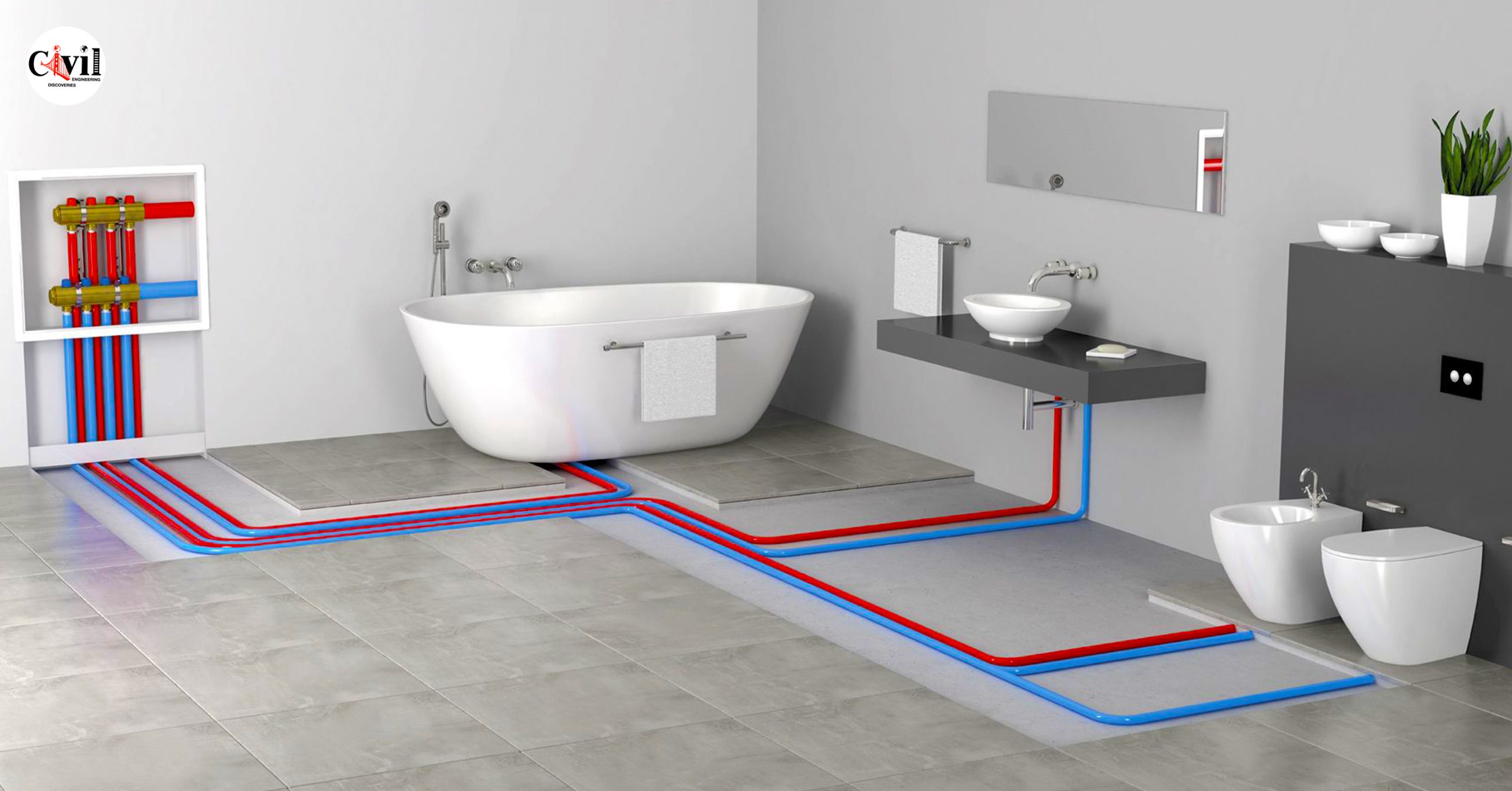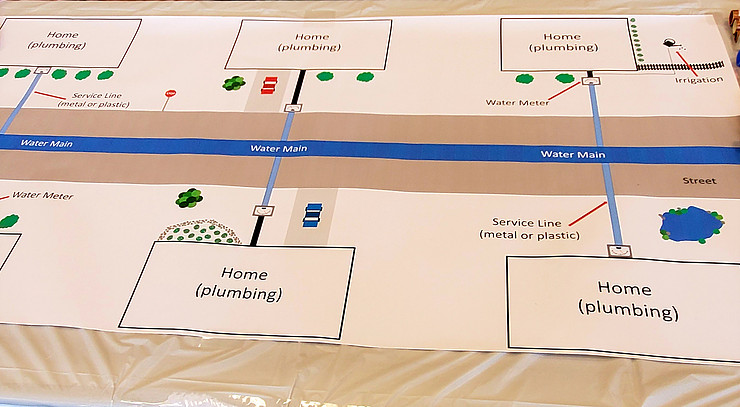An In-Depth Look at Your House's Plumbing System Anatomy
An In-Depth Look at Your House's Plumbing System Anatomy
Blog Article
They are making a number of good observations on Plumbing Installation 101: All You Need to Know in general in this content directly below.

Understanding how your home's pipes system works is crucial for every home owner. From delivering tidy water for alcohol consumption, cooking, and showering to safely getting rid of wastewater, a well-kept plumbing system is crucial for your family members's health and convenience. In this detailed guide, we'll discover the complex network that comprises your home's plumbing and offer suggestions on upkeep, upgrades, and dealing with usual issues.
Intro
Your home's plumbing system is greater than simply a network of pipelines; it's a complex system that guarantees you have access to tidy water and efficient wastewater elimination. Understanding its components and exactly how they interact can assist you prevent costly fixings and ensure every little thing runs smoothly.
Standard Parts of a Pipes System
Pipes and Tubing
At the heart of your pipes system are the pipelines and tubing that lug water throughout your home. These can be constructed from various products such as copper, PVC, or PEX, each with its advantages in regards to resilience and cost-effectiveness.
Components: Sinks, Toilets, Showers, etc.
Components like sinks, toilets, showers, and bath tubs are where water is used in your house. Understanding exactly how these components connect to the plumbing system aids in identifying troubles and planning upgrades.
Valves and Shut-off Factors
Valves manage the flow of water in your plumbing system. Shut-off valves are critical during emergency situations or when you need to make repair work, permitting you to separate parts of the system without disrupting water flow to the entire home.
Water System
Main Water Line
The primary water line attaches your home to the metropolitan water or a private well. It's where water enters your home and is dispersed to different components.
Water Meter and Stress Regulatory Authority
The water meter actions your water usage, while a pressure regulatory authority makes certain that water flows at a risk-free stress throughout your home's pipes system, protecting against damage to pipelines and components.
Cold Water vs. Hot Water Lines
Comprehending the difference in between cold water lines, which provide water straight from the major, and warm water lines, which carry heated water from the water heater, helps in troubleshooting and planning for upgrades.
Drainage System
Drain Water Lines and Traps
Drain pipelines carry wastewater far from sinks, showers, and toilets to the sewer or sewage-disposal tank. Catches protect against sewer gases from entering your home and additionally catch particles that might trigger blockages.
Air flow Pipelines
Air flow pipelines enable air into the drainage system, avoiding suction that can reduce drain and cause catches to vacant. Proper air flow is crucial for keeping the stability of your plumbing system.
Relevance of Correct Drain
Guaranteeing correct drain avoids back-ups and water damage. Routinely cleaning up drains and maintaining catches can stop costly repairs and expand the life of your plumbing system.
Water Furnace
Types of Hot Water Heater
Hot water heater can be tankless or conventional tank-style. Tankless heating systems heat water as needed, while tanks keep heated water for prompt usage.
How Water Heaters Attach to the Plumbing System
Understanding exactly how hot water heater link to both the cold water supply and hot water distribution lines aids in diagnosing problems like insufficient hot water or leaks.
Upkeep Tips for Water Heaters
Consistently flushing your hot water heater to remove sediment, examining the temperature level settings, and checking for leakages can extend its life expectancy and enhance power efficiency.
Common Plumbing Issues
Leakages and Their Reasons
Leakages can occur because of maturing pipelines, loosened fittings, or high water pressure. Dealing with leaks immediately protects against water damage and mold growth.
Blockages and Obstructions
Obstructions in drains and toilets are frequently caused by flushing non-flushable items or an accumulation of oil and hair. Making use of drainpipe displays and bearing in mind what drops your drains pipes can protect against obstructions.
Indicators of Plumbing Problems to Look For
Low water stress, slow-moving drains pipes, foul odors, or abnormally high water bills are signs of possible pipes issues that need to be resolved without delay.
Pipes Upkeep Tips
Normal Assessments and Checks
Arrange annual plumbing inspections to catch issues early. Try to find signs of leakages, rust, or mineral build-up in taps and showerheads.
DIY Maintenance Tasks
Basic tasks like cleaning tap aerators, looking for commode leaks utilizing dye tablet computers, or shielding exposed pipes in cool climates can prevent major plumbing issues.
When to Call a Professional Plumbing
Know when a plumbing concern calls for professional expertise. Trying complex repair services without correct understanding can cause more damages and higher repair expenses.
Updating Your Plumbing System
Factors for Updating
Upgrading to water-efficient components or replacing old pipes can boost water high quality, lower water expenses, and enhance the worth of your home.
Modern Pipes Technologies and Their Benefits
Check out innovations like smart leak detectors, water-saving toilets, and energy-efficient water heaters that can conserve money and minimize environmental impact.
Expense Considerations and ROI
Compute the upfront costs versus long-lasting savings when taking into consideration plumbing upgrades. Lots of upgrades pay for themselves via reduced utility expenses and fewer repair services.
Ecological Effect and Preservation
Water-Saving Components and Devices
Mounting low-flow taps, showerheads, and bathrooms can substantially decrease water usage without sacrificing performance.
Tips for Minimizing Water Usage
Easy habits like repairing leaks without delay, taking much shorter showers, and running complete tons of laundry and recipes can save water and lower your utility expenses.
Eco-Friendly Plumbing Options
Take into consideration lasting pipes materials like bamboo for flooring, which is durable and environment-friendly, or recycled glass for counter tops.
Emergency situation Readiness
Actions to Take During a Plumbing Emergency situation
Know where your shut-off shutoffs are located and just how to turn off the water in case of a ruptured pipeline or major leak.
Importance of Having Emergency Calls Useful
Maintain call details for regional plumbings or emergency solutions easily offered for fast reaction during a pipes dilemma.
Do It Yourself Emergency Situation Fixes (When Applicable).
Short-lived repairs like utilizing duct tape to spot a leaking pipe or putting a container under a leaking faucet can decrease damages up until a professional plumbing gets here.
Final thought.
Understanding the composition of your home's pipes system equips you to maintain it properly, conserving time and money on fixings. By complying with regular upkeep regimens and remaining educated about modern-day pipes technologies, you can ensure your pipes system runs successfully for years to find.
HOW YOUR PLUMBING SYSTEM WORKS
Which Pipes Do What?
Blue lines = fresh water supply entering the building
Red lines = hot water supply entering the building
Grey lines = pipes carrying waste away from the building and venting pipes carrying gases away from the building (through the roof)
YOUR MAIN PLUMBING SYSTEMS
There are two main plumbing systems that support your home s basic plumbing needs one that brings clean water into your home, and one that sends dirty water away from your home. Connected to the toilet, bath, shower, and other faucets in your home, these two systems keep your water flowing in the right directions.
ACCESSING FRESH WATER
Fresh and clean water is brought into your home through the main water supply line . Filtered through one pipe, this water is pressured to flow into the various fixtures in your home at any given time.
This water can be sourced from a well located on your property, a pond or river (mostly cottages), or, as in most cases, from the city s municipal water treatment centre. However, it is important to note that water that is untreated, such as the water siphoned from ponds or rivers, may not be safe to drink. Personal water supplies always need to be treated for hardness and contaminants before consumed.
MUNICIPAL WATER SUPPLIES
Improve taste and odour
Remove sediment
Eliminate hardness
Reduce chlorine
COLD WATER SUPPLY VS. HOT WATER SUPPLY
Cold water flows into your home or building through the service line, which then distributes hot or cold water to your fixtures. This line is most commonly run through a central column that runs floor to floor. Hot water runs in short and straight pipes as the longer the pipeline, the more heat that will be lost in the transfer. Having shorter pipes also allows residents to access hot water more quickly.
WASTE WATER SYSTEM
Your wastewater system is divided into two parts pipes that send wastewater away from your home and venting pipes that send sewer gas away from your home. Sewage water travels through pipes that flush the water and waste towards local sewers that are operated and managed by your city or town. Most sewer systems rely on gravity to move the wastewater to where it needs to go.
The further away from your toilet or sink, the larger wastewater pipes become. This allows for waste to be disposed of from various parts of your home or business at once without pipe blockages. The angle and flow of these pipes are also essential for keeping your waste pipes clear of build up.
https://harrisplumbing.ca/how-your-home-plumbing-system-works/

HOW YOUR PLUMBING SYSTEM WORKS
Which Pipes Do What?
YOUR MAIN PLUMBING SYSTEMS
There are two main plumbing systems that support your home s basic plumbing needs one that brings clean water into your home, and one that sends dirty water away from your home. Connected to the toilet, bath, shower, and other faucets in your home, these two systems keep your water flowing in the right directions.
ACCESSING FRESH WATER
Fresh and clean water is brought into your home through the main water supply line . Filtered through one pipe, this water is pressured to flow into the various fixtures in your home at any given time.
This water can be sourced from a well located on your property, a pond or river (mostly cottages), or, as in most cases, from the city s municipal water treatment centre. However, it is important to note that water that is untreated, such as the water siphoned from ponds or rivers, may not be safe to drink. Personal water supplies always need to be treated for hardness and contaminants before consumed.
MUNICIPAL WATER SUPPLIES
COLD WATER SUPPLY VS. HOT WATER SUPPLY
Cold water flows into your home or building through the service line, which then distributes hot or cold water to your fixtures. This line is most commonly run through a central column that runs floor to floor. Hot water runs in short and straight pipes as the longer the pipeline, the more heat that will be lost in the transfer. Having shorter pipes also allows residents to access hot water more quickly.
WASTE WATER SYSTEM
Your wastewater system is divided into two parts pipes that send wastewater away from your home and venting pipes that send sewer gas away from your home. Sewage water travels through pipes that flush the water and waste towards local sewers that are operated and managed by your city or town. Most sewer systems rely on gravity to move the wastewater to where it needs to go.
The further away from your toilet or sink, the larger wastewater pipes become. This allows for waste to be disposed of from various parts of your home or business at once without pipe blockages. The angle and flow of these pipes are also essential for keeping your waste pipes clear of build up.
https://harrisplumbing.ca/how-your-home-plumbing-system-works/
Do you really like reading up on Anatomy of a House: Understanding the Components? Try to leave feedback down below. We will be happy to see your feelings about this content. Hoping that you come back again later on. So long as you liked our blog entry if you please don't forget to pass it around. I cherish your readership.
Click Here Report this page